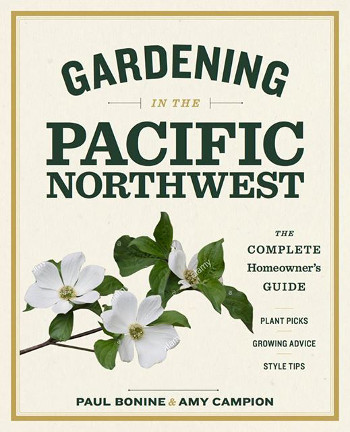![By Rosalee Yagihara from Vancouver, Canada (032A3231) [CC BY 2.0 (http://creativecommons.org/licenses/by/2.0)], via Wikimedia Commons](http://amycampion.com/wp-content/uploads/2015/01/march-against-monsanto-gmos-620.jpg)
Are you OK with GMOs, but don’t know how to refute anti-GMO arguments?
Are you undecided?
GMOs Get Personal
At different times in my life, I’ve held all three of these points of view. The issue got personal last fall, though, when we Oregonians got ready to vote on Measure 92, which would have required labeling of GM foods (it failed to pass, but barely).
I realized I should educate myself, but where to start? Navigating your way around both sides’ talking points is like crossing the Fire Swamp in The Princess Bride—complete with Rodents of Unusual Size (though that GMO study was later retracted).
Come along for the Ride
Luckily, I found my Westley to guide me through. Nathanael Johnson’s fantastic series of articles called Panic-free GMOs in Grist magazine (published in 2013) was exactly what I was looking for.
Grist is a left-leaning online magazine that publishes green news. They call themselves “A Beacon in the Smog.” Johnson is their food writer, and in the opening article to Panic-Free GMOs, he says he’s truly undecided on GMOs and wants to cut through the rhetoric and figure out where he stands. He invites the reader to “come along for the ride.”
I went along for the ride—all 30 posts.
Johnson follows through on his promise to be neutral, and his posts are peppered with quotes from personal interviews with dozens of researchers, spokespeople, and activists from both sides of the story. His links to documents and articles on other sites enrich the story further. The series is fair, informative, and thought-provoking, and I was surprised by a lot of what I learned.
![By Lindsay Eyink from San Francisco, CA, USA (Research field) [CC BY 2.0 (http://creativecommons.org/licenses/by/2.0)], via Wikimedia Commons](http://amycampion.com/wp-content/uploads/2015/01/gmo-cornfield-620.jpg)
Early on in Johnson’s series, the idea that genetically modified foods aren’t safe to eat takes a beating. I was floored to learn there’s such a strong consensus among the scientific community that GM foods are safe. While we consumers have been whipping ourselves into a frenzy over GMOs, scientists have been quietly conducting hundreds of studies on GM foods, and virtually none of the studies have indicated that we have any reason to believe genetically modified foods are any more dangerous than conventional foods. We’re talking independent studies. Peer-reviewed studies. Long-term studies.
The American Association for the Advancement of Science agrees that eating genetically modified food poses no significant risk to our health, as do the American Medical Association, the Food and Drug Administration, the World Health Organization, and the British Royal Society, among others.
In the face of this evidence, there are still many who fear some danger lurking in genetically modified food that the studies somehow have not yet been able to detect. Despite overwhelming scientific evidence to the contrary, they refuse to change their beliefs. Sound familiar? Johnson references a common comparison between the anti-GMO crowd and climate change deniers: “It’s hard to make the case that we should trust science and act to stem global warming,” he points out, “while at the same time we are scoffing at the statements of *snort* scientists on genetic modification.”
Where’s the Outrage?
At the core of the resistance to genetically modified foods is a gut-reaction response that such foods are unnatural. “Frankenfoods” they’re called. Yet there seems to be no debate over mutagenic breeding, which is achieved by dousing seeds with radiation in hopes of creating mutant plants with desirable characteristics. Johnson mentions Calrose-76 rice as one example; Rio Red grapefruit is another. Where’s the outrage here? While mutation breeding technically isn’t genetic engineering, it does seem to be a rather unnatural breeding regime for foods you can find in the organic aisle.
“Is There a GM Crop You Could Get Behind?”
My favorite piece of the series is Article #11, in which Michael Pollan weighs in on the debate. I love Pollan’s writing: The Botany of Desire, The Omnivore’s Dilemma, In Defense of Food, Cooked. As an opponent—or at least a serious skeptic—of GMOs, Pollan does a surprising thing, though, and plays devil’s advocate. In the article he tells Johnson that he always likes to challenge critics of GM by asking them, “Can you imagine a GM crop that you could get behind?”
![By International Rice Research Institute (IRRI) [CC BY 2.0 (http://creativecommons.org/licenses/by/2.0)], via Wikimedia Commons](http://amycampion.com/wp-content/uploads/2015/01/golden-rice-620.jpg)
“Stuck in the Future”
Golden Rice is still in development, however, and has been since the 1990s. Like many other wonderful humanitarian applications of genetically modified foods the biotech industry has promised us, it’s not yet reality. Johnson describes some of these noble but yet-to-be-realized promises as a bit of “science fiction,” adding that the debate over genetically modified foods is “stuck in the future.”
The reality of GM technology today is that the vast majority of it is used in two ways: to give crops built-in resistance to harmful insects or to make crops immune to Round-up herbicide, or glyphosate.
Crops that have insect resistance built-in are engineered to contain the bacterium Basillus thuringiensis, or Bt, as it is more commonly known—an organism used widely in organic farming to control pests. So far, Johnson says, Bt-modified crops have been “a force for good” for the environment and have significantly reduced the amount of insecticides farmers apply to their crops. As we see insects develop a resistance, however, that might change if breeders decide to up the ante with more powerful insecticidal controls.
Monsanto’s “Roundup Ready” crops are engineered to survive a dousing of glyphosate, making it easy for farmers to control weeds by spraying whole fields at once. Naturally, this has led to a lot more glyphosate being used on crops. Monsanto points out that Roundup is a much less toxic herbicide than others that might be used without the Roundup Ready crops, but that defense may crumble as “superweeds” develop resistance and stronger controls are needed. This has begun to happen, first in the South and now in the Midwest.
The Cliff’s Notes
Johnson recaps the entire series of posts here. He finishes up with posts from a couple of other writers, one pro-GMO and one against, which add a nice compliment to his work.
Recently, Johnson added one more post called, “Finally, a GMO debate without shouting,” which provides a link to an episode of Intelligence Squared U.S. in which two GM advocates and two GM opponents duke it out for an hour and forty-five minutes. Johnson said he learned a few things, and I did, too.
Did you know that insulin given to diabetics as well as several of the most popular prescription drugs in this country are the result of genetic engineering?
Labeling GMOs
So, back to where I started. I was preparing to vote on Measure 92, so I was especially interested in what Nathanael Johnson had to say on labeling GMOs. And despite his conclusion that GMOs are basically safe, he was—surprisingly—in favor of labeling, though not for the reasons you might expect.

Because genetically modified foods aren’t labeled, he explains, there’s an aura of mystery about them, and the unknown makes us fearful. Labeling, he says, “removes dread fear from the debate. Once GM food is labeled, the risk that people ascribe to it should drop precipitously.” We’ll get used to seeing it on familiar foods, and eventually it won’t phase us anymore.
It will be interesting to see which way public opinion on GMOs moves in the future. Which camp will win over the undecideds (and there are a lot of them—54% of Americans, according to this poll)? Will the diehard believers on either side listen to anything the other side says, or will they just keep trying to drown each other out with their own party’s talking points?
In any case, articles like Johnson’s are a wonderful break from all the shouting, fact-skewing, and selective reporting from both sides. Thanks for taking me along for the ride, Nathanael.




























Great overview, Amy, and thank you for this calm and reasoned post. I did quite a bit of research on the subject for a short talk back in October, and I was interested to discover some of the same information. Although I still believe we should label GMOs, it isn’t entirely for the same reasons I had prior to my research. One aspect of my talk that particularly resonated with my non-gardening audience was basic understanding of the difference between hybrids and genetically altered organisms. There is a great deal of confusion out there: Thanks for adding this information to the ongoing, and hopefully rational, discussion.
Thanks for your comments, Jane. It’s hard to have a thoughtful discussion when people don’t even understand the difference between hybrids and GMOs. There was a good article in the Washington Post http://www.washingtonpost.com/blogs/wonkblog/wp/2014/10/29/its-not-that-gmo-labeling-is-popular-its-that-people-are-clueless/
explaining why support is so huge for labeling GMOs when people are polled (93% in one poll), but when they actually go to vote, the measures don’t pass (in Oregon it almost did, but Colorado’s got soundly defeated). It’s because so many people (over half) don’t understand the issue, and so they go along with what seems to be popular opinion when asked. But when it comes time to vote, they still don’t know much about it, and when people don’t understand something, they tend to vote against it. It will be interesting to see where public opinion goes when people get more informed.
Hi Amy. Shout out from Cincinnati and happy New Year!
Our local Democratic Club recently hosted a lecture on this subject. Got me interested. Seems to me to be three important aspects to the debate: food safety, environmental impact and economic impact.
Food safety
While there have been many food safety studies, I take exception to the adjective “long term”. The only real long term study is the one we are all participating in and the outcome will not be known for at least a generation.
Environment
I think the jury is still out on the effects of potentially higher and higher use of Roundup on soil and insects (such as bees).
Economics
The reason so many institutions are behind GMO is that it promises to increase yields to help feed an ever growing human population, esp. in the face of climate change. The push is to leverage GMO technology on a global scale. Aside from who benefits financially, are we putting our eggs in a monocultural basket tied to a technology that looks safe today but has only been around for a few years. That’s a big question.
Ethan, Three very good points. I think it’s hard to justify being an extremist on either end of the spectrum on gmos, because both sides have good points that take away from the other. As far as long-term studies, I haven’t really dug into the specifics and know there probably aren’t a lot of studies that could be called “long-term.” However, gmos have been around since the 1990s, not just a few years. And also, I think I would be more concerned about their safety if there were some scientific reason for there to be a danger in eating something genetically modified. What exactly is the concern? Allergies? They are tested extensively for allergies. The logic seems a little fuzzy there.
I am certainly no apologist for Monsanto. I realize what they do is profit-driven and they don’t have a great record with regards to the environment. Like the author of the articles in Grist, I think we should have the gmo technology in our toolkit, but it’s not the solution to being able to feed the world, and there are a lot drawbacks to it.
Thank you Amy for talking about this! It is clearly two separate issues; whether GMO foods are safe for us and whether or not they should be labeled. I am in the camp that GM plants are perfectly safe, but more importantly, can give a huge boost to those in parts of the world with many mouths to feed in a world of climate change. I do believe they should be labeled though. I think this gives large corporations carte blanche to manipulate the market (s) to their advantage.
Vanessa, I’m inclined to believe that labeling just fuels unnecessary fears about gmos, though I do understand your point of view. There are other things I think are more important that I WOULD like to see labeled. I would love to know the nutrient profile of the soil that produce is grown on, for example, though that’s just not going to happen. I do think that Johnson has a good point that if gmos ARE labeled, then people will just get blase about them. How many unpronounceable things are already in so many foods? Few people really read and care about them.
[…] that Monsanto’s Roundup Ready crops are likely the biggest culprit, causing me to question my earlier, overly rosy opinion on GM crops. These genetically engineered crops enable glyphosate weed killer to be sprayed liberally over […]